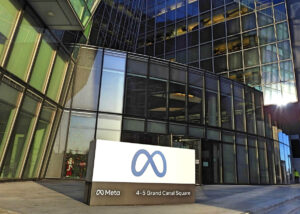Amazon CEO deluged with emails over red tape request; Waymo’s gets creative with employee perks
Plus, the ties between the RTO process and accessibility comms.

Greetings, comms pros! Let’s take a look at a few news stories from the past week and see what we can learn from them.
1. Amazon CEO asked employees to call out red tape — and got over a thousand emails
Amazon CEO Andy Jassy said that he’s aiming to flatten the organization in his annual letter to the company’s shareholders, as he says “builders hate bureaucracy.” As part of his process, Jassy reportedly sought out the feedback of employees and it came in droves.
There is a difference between process and bureaucracy. When you’re running something at scale, you need mechanisms to deliver the right experience and constant improvement for customers. However, as companies grow and add more managers, unneeded processes get layered on that add little value. Last fall, I asked teammates across the company to send me bureaucracy examples that they were experiencing. I’ve received almost 1,000 of these emails, and read every single one. Builders hate bureaucracy. It slows them down, frustrates them, and keeps them from doing what they came here to do. As leaders, we don’t always see the red tape buried deep in our organizations, but we can sure as heck eliminate it when we do.
Jassy added that employee feedback had led to over 375 changes at Amazon, but didn’t go into detail as to what those changes were.
Amazon isn’t the only company calling for flatter organizational structures — Meta has been doing the same thing for a few years now. But Jassy is actively involving employees in the restructure of their organization, which can help build buy-in amid major changes.
Jassy’s transparency and willingness to at least give the appearance of listening to his colleagues from the top of one of the world’s most important organizations show decent leadership comms chops.
2. Waymo launches exclusive merch store for employees
Waymo is an Alphabet subsidiary best known for its self-driving cars. But it’s also selling some pretty cool merch — like exclusive miniatures of its cars — but you can only get your hands on them if you’re an employee.
While the company didn’t say much about the offerings beyond the fact that they exist, selling physical merchandise that’s got an air of exclusivity serves a few purposes.
First, it’s a way to create a sense of belonging for your employees. You’re only able to purchase the collectibles if you work at Waymo, and while that’s not likely to be a primary driver of anyone’s career choices, it does create an air of exclusivity to the collectibles that rewards employees.
In addition, these kinds of peripheral perks present a great opportunity for communicators to reaffirm culture. If you use the company’s intranet to share pictures of employees showing off their exclusive hoodies and pins, it can drive more employees to want to get in on the fun. That’s a great way to solidify a rallying point for the company’s culture through something as simple as some merch.
3. The connection between RTO and workplace accessibility
A piece for Mashable took a look at the rise of remote work over the last five years, the pushback it has gotten recently from the federal level and where things are headed — especially for employees who need an accessible workplace. This comes as some large companies have revised their disability policies to make it more difficult to get a remote work exemption.
All this raises the question — how can we talk about accessible workplaces against the backdrop of an RTO process?
It’s not a communicator’s job to create policy in most cases — it’s their job to share it. But they can serve as a key conduit and provide feedback to policymakers and leaders based on what they’re hearing from employees. That’s a big cornerstone of culture building.
In a piece for Ragan last year, Chasing the Sun founder Mark Mohammadpour outlined how communicators should lead all RTO comms within the lens of a culture charter that governs employee comms. That includes carving out space to talk about accessibility and how it’s impacted by RTO. Communicators need to be specific in their RTO communications.
“It’s a challenge, but this is also an opportunity for us as communicators to really step up, be strategic and talk about the impact,” Mohammadpour explained. “If we don’t talk about this, you’re going to lose your people, because they’re going to go to companies that are much more specific on their RTO policies and ultimately have a better understanding of what their life is like.”
4. How about some good news?
- New computer chips can do calculations with the power of light.
- Two metal detectorists in Poland found a 2,500-year-old dagger on a beach.
- Chewing gum with a special bean powder can help reduce the transmission of viruses.
- Ragan Training is great for communications pros to find inspiration and resources.
- You should be rewarded for your work. Find out how to earn an award here!
Have a great weekend comms all-stars!
Sean Devlin is an editor at Ragan Communications. In his spare time he enjoys Philly sports and trivia.







